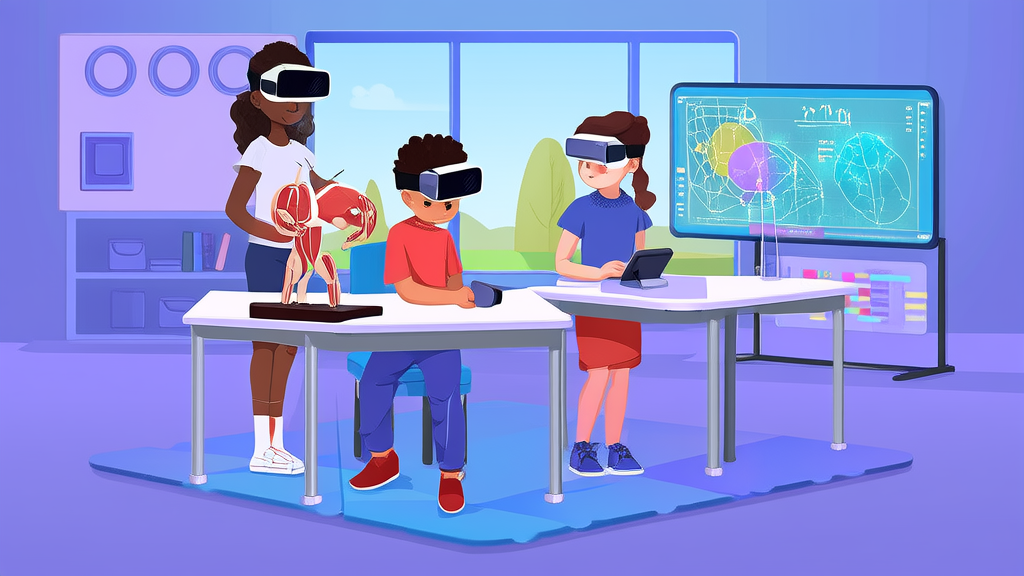Transforming K12 Education: 3 Key Innovations Shaping the Future

Empowering the Future: Navigating K12 Education in 2025
Welcome to an exciting era of K12 education, where innovation and insight are transforming how we teach and learn. As we stand in July 2025, it's clear that the landscape of education is evolving rapidly, driven by cutting-edge methodologies, a deeper understanding of child development, and the integration of advanced technologies. This blog post aims to guide parents and educators through these changes, providing valuable insights, practical tips, and inspiring success stories.
Latest Teaching Methodologies and Their Effectiveness
In recent years, several teaching methodologies have gained prominence for their effectiveness in engaging students and fostering a deeper understanding of subjects. One such approach is project-based learning (PBL), which encourages students to explore real-world problems and challenges. For example, a high school biology class might work on a project to design a sustainable community garden, integrating concepts from ecology, botany, and environmental science.
Another notable method is blended learning, which combines traditional face-to-face classroom instruction with online digital resources. This approach allows for personalized learning experiences, as students can access additional materials and tutorials at their own pace. A study by the Clayton Christensen Institute found that blended learning can lead to significant improvements in student engagement and academic performance.
Child Development Insights and Research
Understanding child development is crucial for both parents and educators. Recent research has highlighted the importance of social-emotional learning (SEL) in the overall development of children. SEL helps students develop skills like self-awareness, self-management, social awareness, relationship skills, and responsible decision-making. Schools that integrate SEL into their curriculum have seen positive outcomes, including improved behavior, better academic performance, and increased empathy among students.
Additionally, there is growing recognition of the role of play in learning. Play-based learning, especially in early childhood, has been shown to enhance cognitive, physical, and emotional development. For instance, a kindergarten class might use building blocks to teach basic math concepts, or engage in dramatic play to improve language and communication skills.
Educational Technology Trends
Technology continues to play a pivotal role in K12 education, offering new tools and platforms that enhance the learning experience. Artificial intelligence (AI) is one such technology that is making waves. AI-powered adaptive learning systems can tailor content and pacing to individual student needs, ensuring that each learner receives the support they need to succeed. For example, DreamBox Learning uses AI to provide personalized math instruction, resulting in measurable gains in student achievement.
Virtual and augmented reality (VR/AR) are also becoming more prevalent in classrooms. These immersive technologies can bring historical events, scientific concepts, and literary worlds to life, making learning more engaging and memorable. A history class, for instance, might use VR to take a virtual tour of ancient Rome, allowing students to explore the Colosseum and other landmarks in a way that textbooks cannot.
Practical Tips for Parents and Teachers
For parents, staying involved in your child’s education is key. Here are some practical tips:
- Communicate regularly with teachers: Attend parent-teacher conferences, and stay in touch via email or school communication apps.
- Support learning at home: Create a dedicated study space and set aside time for homework and reading. Encourage curiosity and ask open-ended questions to foster critical thinking.
- Encourage extracurricular activities: Participation in sports, arts, and clubs can help develop social skills and provide a well-rounded education.
For teachers, here are some actionable strategies:
- Integrate technology thoughtfully: Use educational apps and tools that align with your curriculum goals and enhance student engagement.
- Foster a growth mindset: Encourage students to view challenges as opportunities for growth. Praise effort and persistence, not just outcomes.
- Create a supportive classroom environment: Build a sense of community and inclusivity. Implement SEL practices to help students develop strong social and emotional skills.
Success Stories and Case Studies
One inspiring success story comes from the Summit Public Schools in California, which implemented a personalized learning platform called Summit Learning. This platform provides students with a customized learning plan and access to a wide range of resources. As a result, Summit schools have seen significant improvements in student engagement, graduation rates, and college readiness.
Another case study is the use of VR in a middle school science class in New York. Students used VR headsets to explore the human body, diving into the circulatory system and observing the heart and blood vessels up close. This hands-on, immersive experience led to a 20% increase in test scores and a 30% increase in student engagement.
Conclusion
The future of K12 education is bright, filled with innovative methodologies, a deeper understanding of child development, and the integration of advanced technologies. By staying informed and engaged, parents and educators can create a supportive and enriching learning environment for every child. Let’s continue to collaborate, innovate, and inspire the next generation of learners. Together, we can empower our children to reach their full potential and build a brighter future.
Join the conversation and share your thoughts and experiences in the comments below. Let’s learn from each other and make a difference in the lives of our students!